Are You Jumping On A Potential Shipwreck?
Eager to jump into cruise ship stocks? Tread carefully and understand the risks. In this article, we are going to take a look at the big 3 publicly traded cruise lines – Carnival(CCL), Norwegian Cruise Line(NCLH) and Royal Caribbean(RCL).
The news is not getting any better. The CDC(Center for Disease Control) has extended their no-sail order to Sept.30 while the CLIA(Cruise Lines International Association) has voluntarily extended the suspension to Oct. 31st. The big question is, how long will they last without generating revenue?
Back in May, it was estimated that they 5-9 months of liquidity remaining. Thats Carnival(9 months), Royal Caribbean(7 months), and Norweigan(5 months). But a lot of progress has been made since then. Cash burn rates have been reduced overall with debt being renegotiated, more staff layoffs, and refunds being reduced.
A look at the current numbers
| Company | Cash Burn(Monthly) | Cash & Equivalent | Debt |
|---|---|---|---|
| Carnival Corporation | $650 Million | 6.9 Billion | 22.3 Billion |
| Royal Caribbean | $250 Million | 3.9 Billion | 16.8 Billion |
| Norwegian Cruise | $150 Million | 1.4 Billion | 8.8 Billion |
Steep Revenue Declines
Below you can see that there as a dramatic decrease in Y/Y revenue declines and has started to pick up mid July.
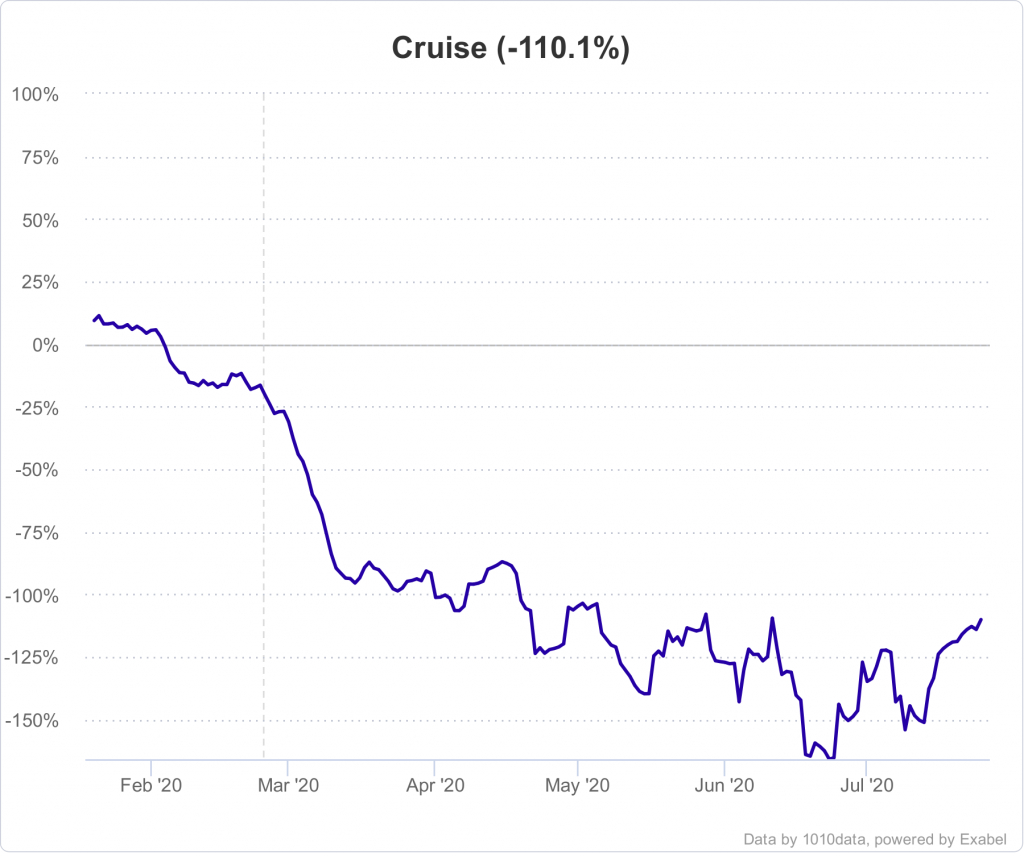
Here’s What It Looks Like For All Sectors..
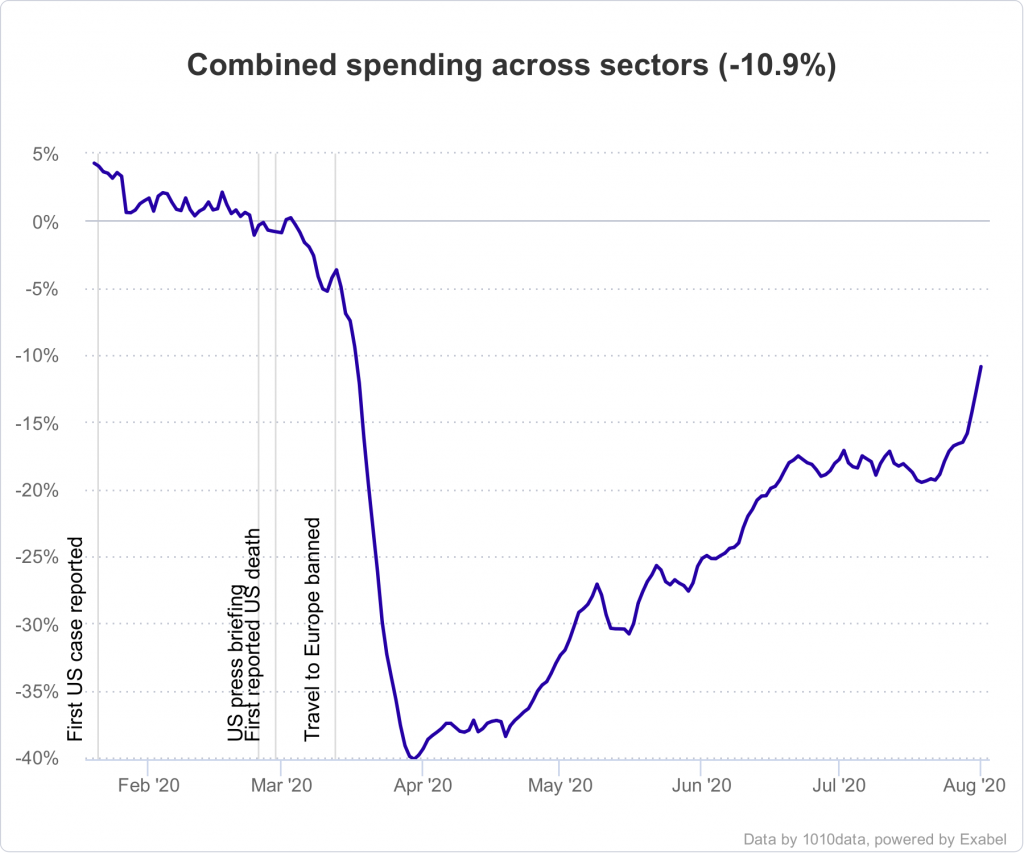
What happens if they go bankrupt?
The biggest risk looming right now is bankruptcy. When Norwegian cruise lines warned investors about the possibility of going bankrupt by next year, the stock tanked 20%. The key assumption here is that they will receive no additional funding for the next 12 months.
If they go bankrupt, the most likely scenario is that they will file for chapter 11. This means that they can continue to operate after restructuring the company and renegotiate debts with creditors to give the company a new lifeline.
Remember, when a company files for bankruptcy, creditors are protected first and each has a different claim priority. Secured creditors which are usually banks get paid first, then unsecured debt holders (which would be bondholders), then preferred shareholders if the company offers preferred shares. Then finally shareholders who are dead last on the priority list. So in most cases, the shareholders are completely wiped out.
When the company emerges from bankruptcy, they get a new listing, new shares are issued. Most of these shares get issued to creditors and possibly previous shareholders if they are lucky. But it won’t be much. Key decisions need to be approved by the court to make the company is meeting certain obligations so you can forget about expansion or receiving dividends.
Conclusion
With spending now on the upswing, we still have a long way to go but there is still hope. Let’s not forget, the future is still uncertain and this global pandemic has been very unpredictable. Chapter 11 is more likely the route they will take if they do in fact go bankrupt. It probably won’t be as nasty and it should be easy to negotiate with creditors since this downturn has nothing to do with lack of demand. Even though bankruptcy is the worst-case scenario, thats not what I’m worried about right now.
We should also be aware that the debt they accumulated will not disappear when this is all over. Even if they start operating at full capacity, growth will be slower. This is bad news for dividend investors since you won’t see a dividend payment for who knows how long.
More debt, less profitable, risk of bankruptcy, and there is no guarantee that they WON’T extend the no-sail restrictions. For now, the risk outweighs the potential reward so I will invest elsewhere and remain on the sidelines.

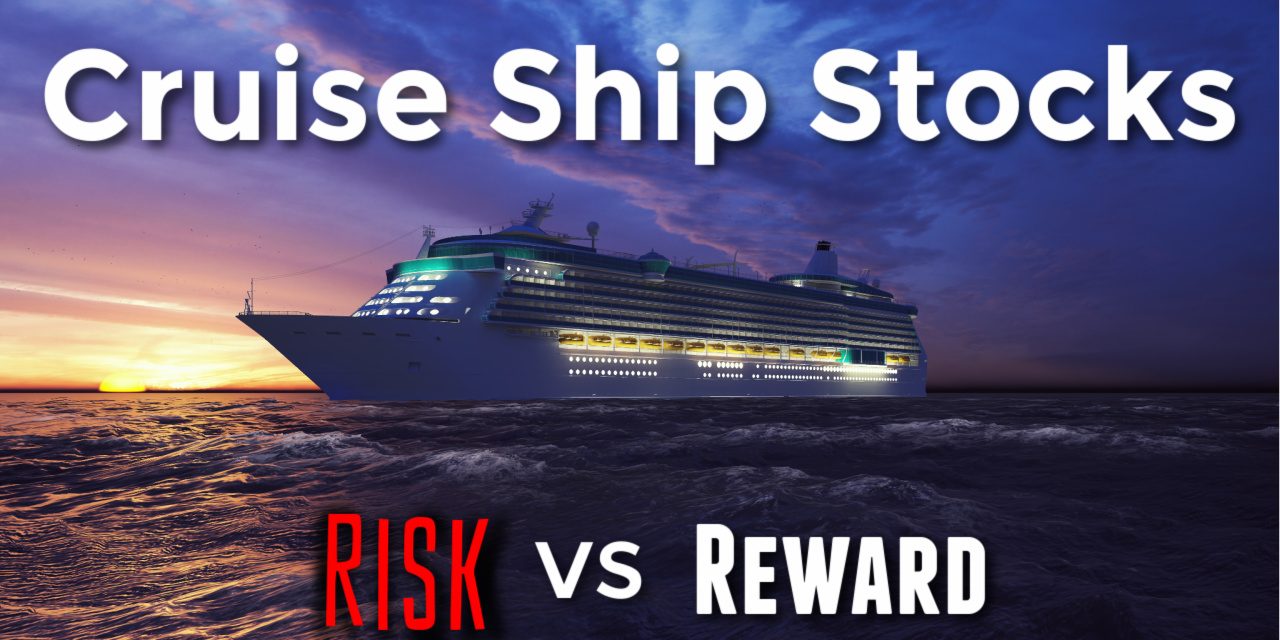

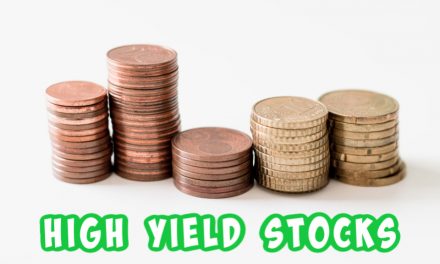

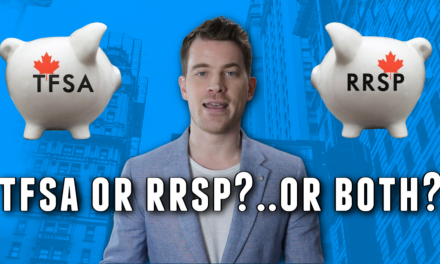
Recent Comments